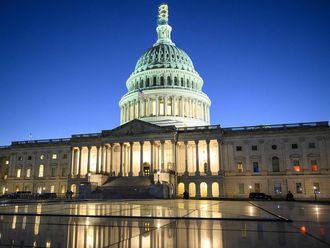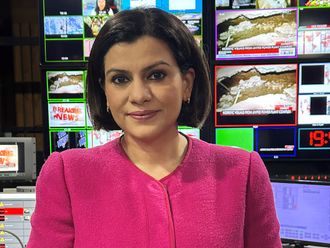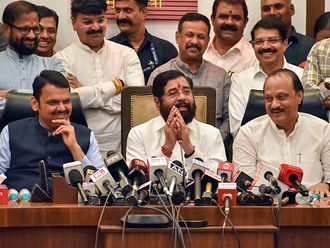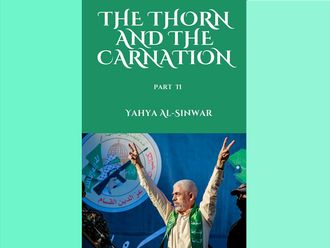
President Barack Obama's speech outlining his roadmap for Afghanistan was in many ways expected. Having tripled the American military contingent, he pledged to withdraw one-third, i.e. 33,000 troops beginning with 10,000 by the end of this year and the remaining by the summer of next year with end of combat operations by end of 2014.
It was a pragmatic approach which took into account the declining support for the decade-long war effort which had cost valuable lives and a trillion and a half dollars at a time when America was hit by recession and high unemployment. While the American military high command and the president's rightwing critics will not be happy with this drawdown, the president has calculated that giving priority now to nation-building in America itself will be popular and pivotal in his 2012 re-election campaign. Analysts are beginning to ask what effects this will have on Afghanistan, negotiations with the Taliban and on neighbouring countries and the region. However, it will become increasingly clear that Obama's speech has put into motion an irreversible process, the end outcome of which remains to be seen.
A distinction has now been drawn between the insurgency which has consumed American combat operations and the Al Qaida terrorists. One category is the ‘reconcilable' Taliban who would divorce themselves from Al Qaida, negotiate to give up violence and work within the Afghan constitutional system and the second category, the ‘irreconcilables' those allied to Al Qaida and global terrorism which will remain targets. This was foretold when the UN Security Council agreed to bifurcate the previously common Al Qaida and Taliban lists of proscribed individuals and organisations.
Now all parties involved, within, and outside Afghanistan will have to adjust to the resulting dynamics which none of them had or have the ability to influence. Some of them may be able to dovetail the new ground realities with their own objectives and thereby continue to maintain their existing relationship and relevance to the United States. For others, despite such an objective, this may not be possible. Obama's speech laid out the parameters of the American position, the curtailing of its original ambitions for nation-building in Afghanistan to a state able to manage its own security. However, the pace at which this was to be done and the equation between the use of force and that of negotiations was not spelt out.
One reason for this endgame continuing to be opaque is the status of American negotiations with the Taliban. The US administration has been engaged in various contacts conducted outside Afghanistan. These would appear to be scoping missions through which the Americans are trying to assess the relative influence of the various Taliban leaders, particularly Mullah Omar and how monolithic or otherwise is the Taliban movement and insurgency. There are also other tracks discussing reconciliation. The high-level Joint Commission between Afghanistan and Pakistan and the Core Group with these two countries and the US.
Two main questions remain in the way of a political settlement with the Taliban. First of all General David Petraeus's strategy of trying to wear down the Taliban has been combined with special operations to kill or capture its unit commanders. Mullah Omar himself remains a target. A continuation is unlikely to win over the Taliban.
Negotiations
Secondly, the main declared Taliban objective calls for the total withdrawal of all foreign forces. While they remain, or if they remain in some form after 2014 which seems to be the objective of strategic talks between the Karzai government and the US, prospects for a settlement appear dim, although the Taliban may also be suffering from a fatigue factor and many may be willing to trade ending links with Al Qaida for a total withdrawal.
Already there are calls within Pakistan that if America can negotiate with the Afghan Taliban, the Pakistan government should do the same with the reconcilable Taliban within Pakistan while isolating and combating the irreconcilable terrorist elements. Another dilemma for both the Afghan people and the neighbouring countries is the outline and duration of the American footprint in Afghanistan. On the one hand this very footprint is an incitement to insurgency and violence within Afghanistan but also in neighbouring Pakistan and elsewhere. On the other hand there is an apprehension that if US withdraws too fast, Afghanistan may plunge back into the chaos that resulted when the Soviet Union was forced to withdraw and the West abandoned Afghanistan.
It is this apprehension which lies at the heart of the maze that Afghanistan has become. One cannot say at this stage how this will be resolved. It will require more skill than employed before on the part of the US administration, an inter-Afghan understanding to live and let live, and for the neighbouring countries and regional forces to confine their ambitions to an Afghanistan which is at peace within and with all its neighbours. If any of these interlocking elements goes out of sync the prognosis for Afghanistan and the region will be bleak.
Ambassador Tariq Osman Hyder is a retired Pakistani diplomat.









